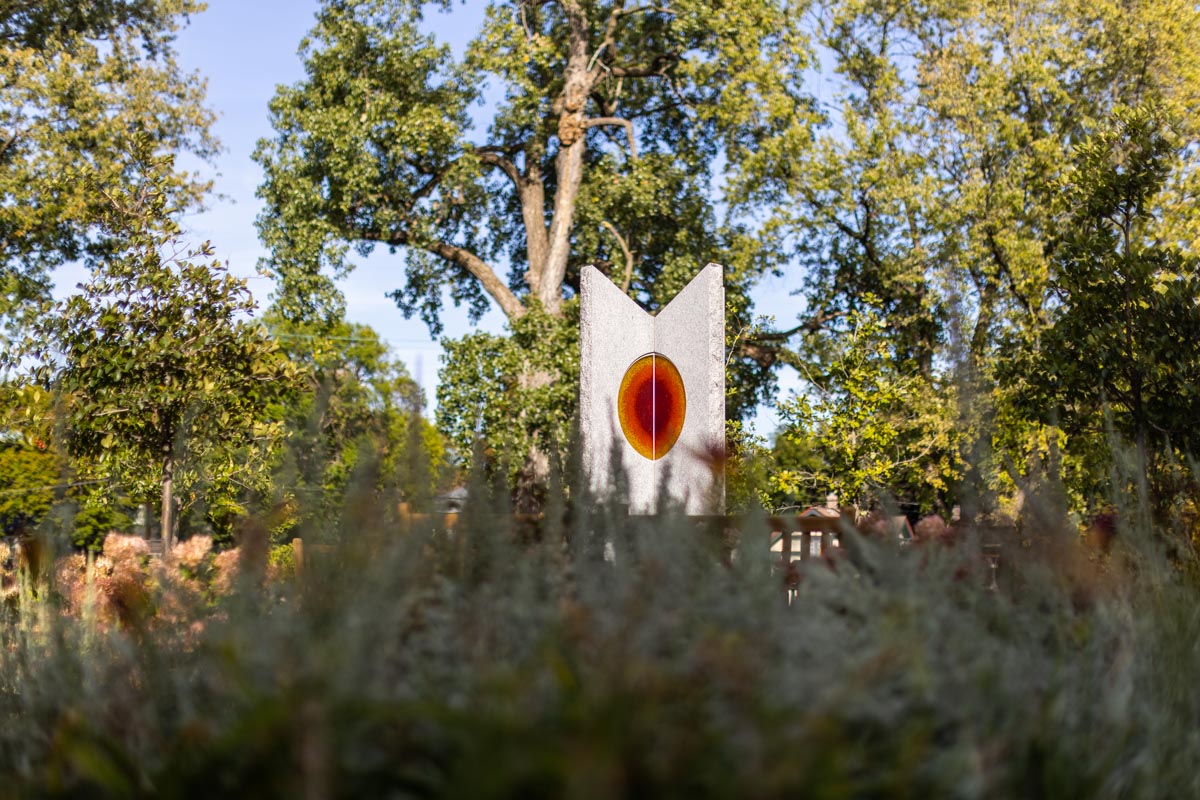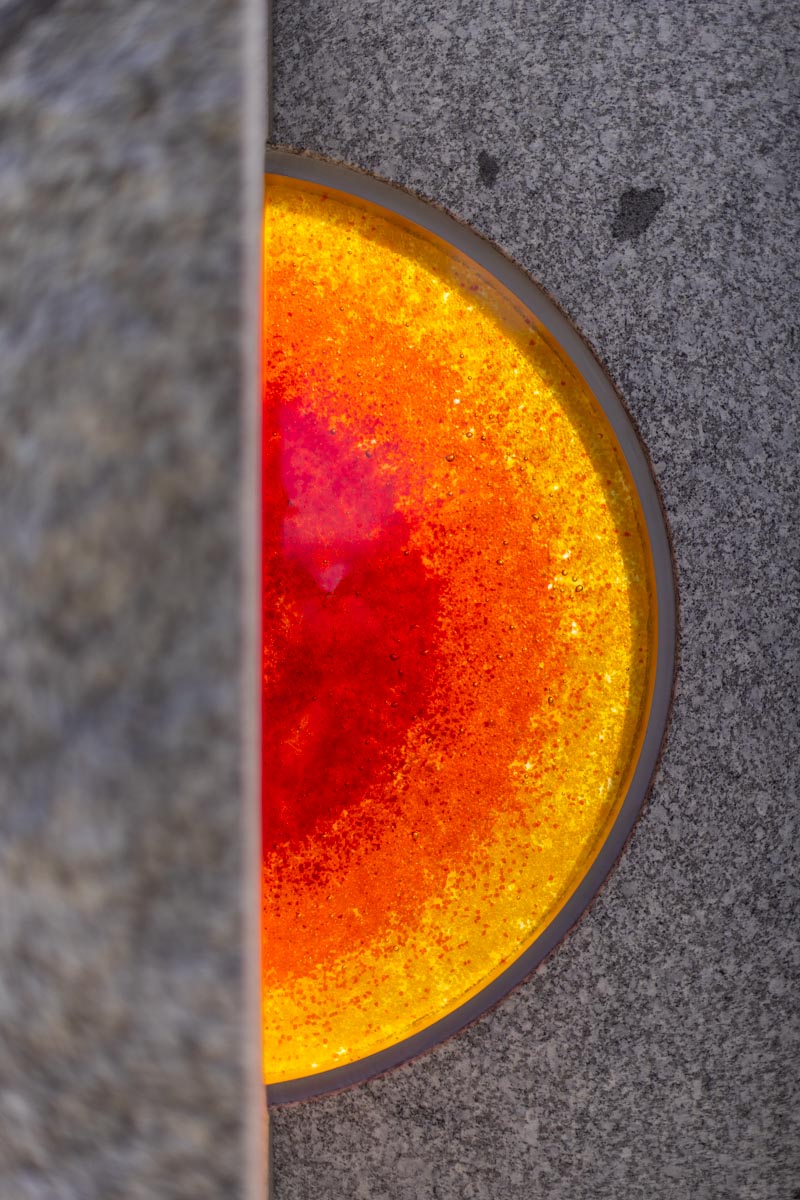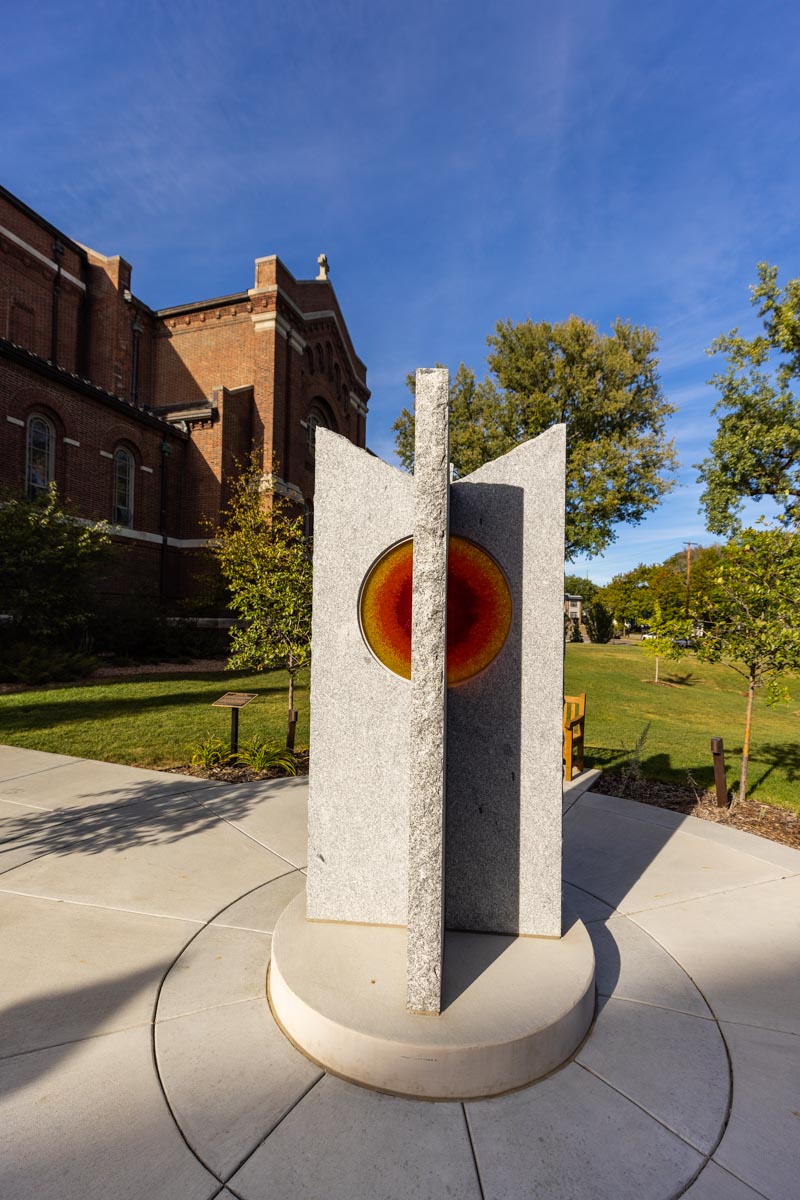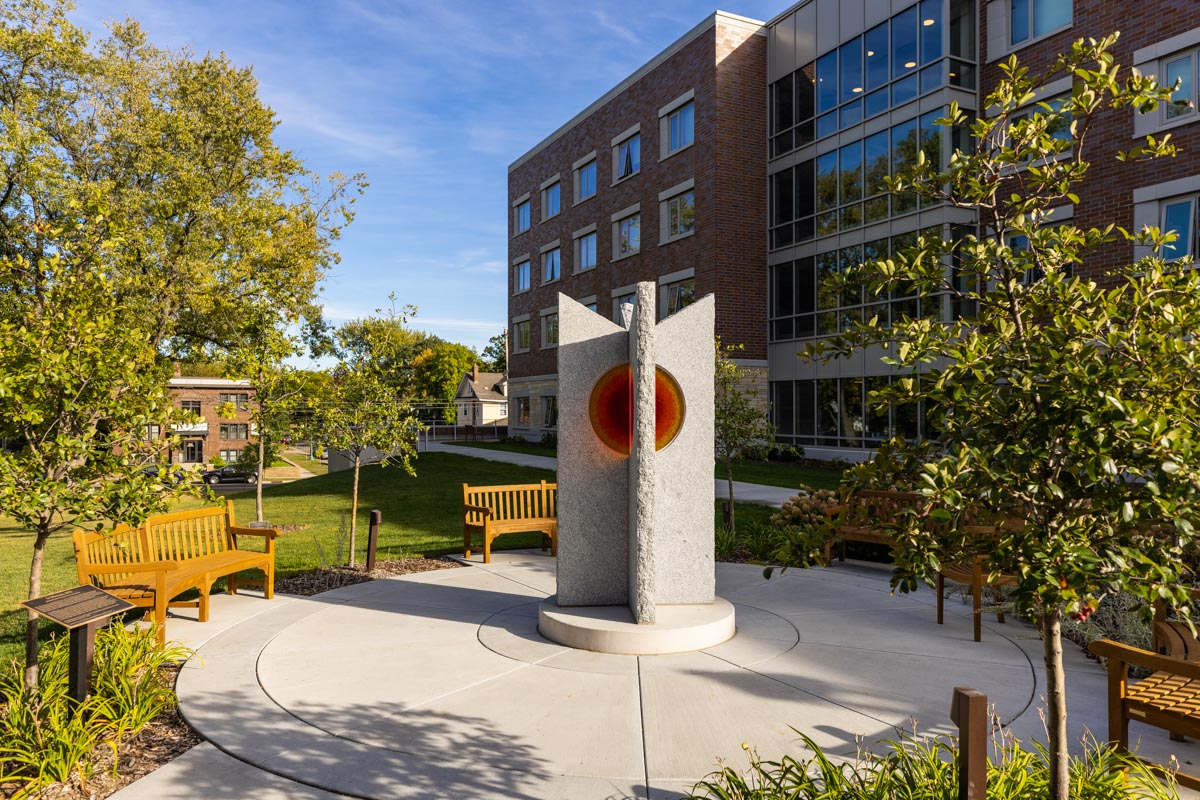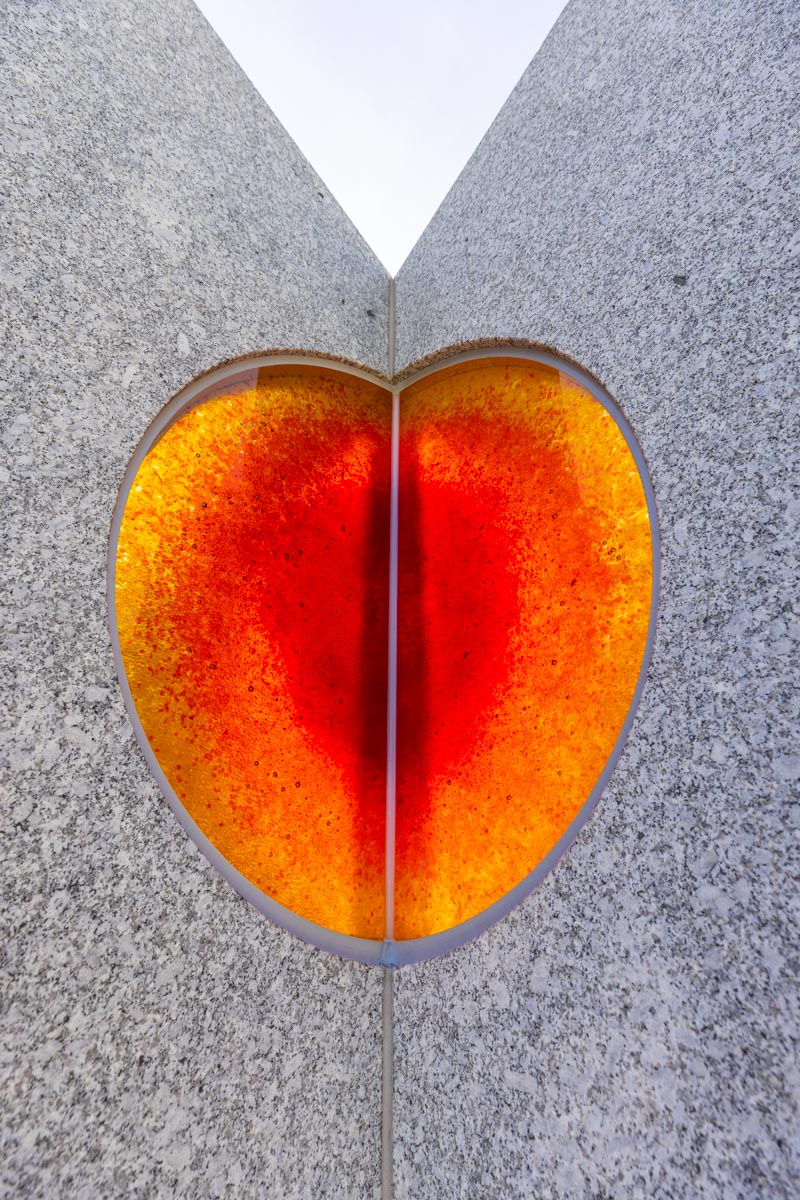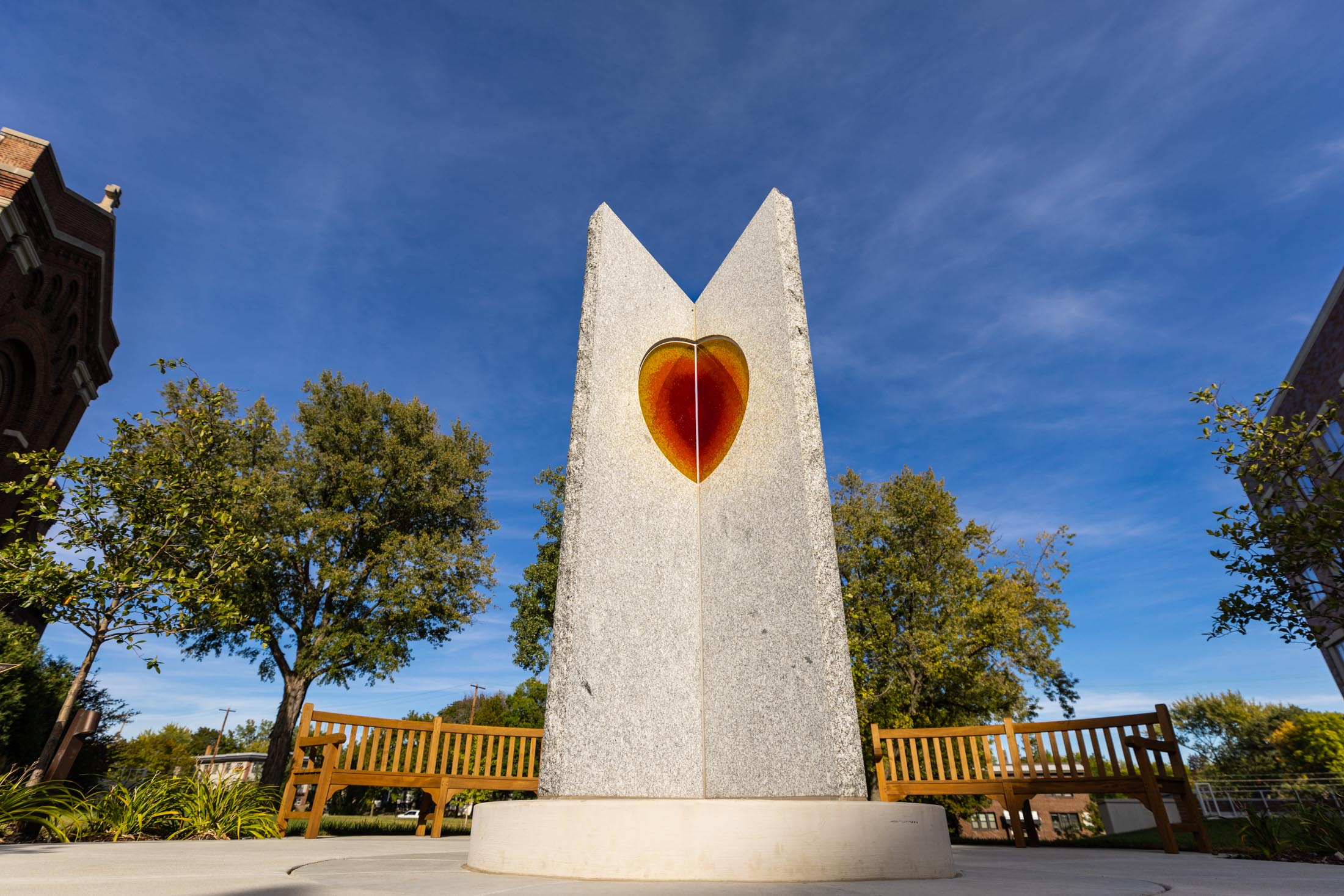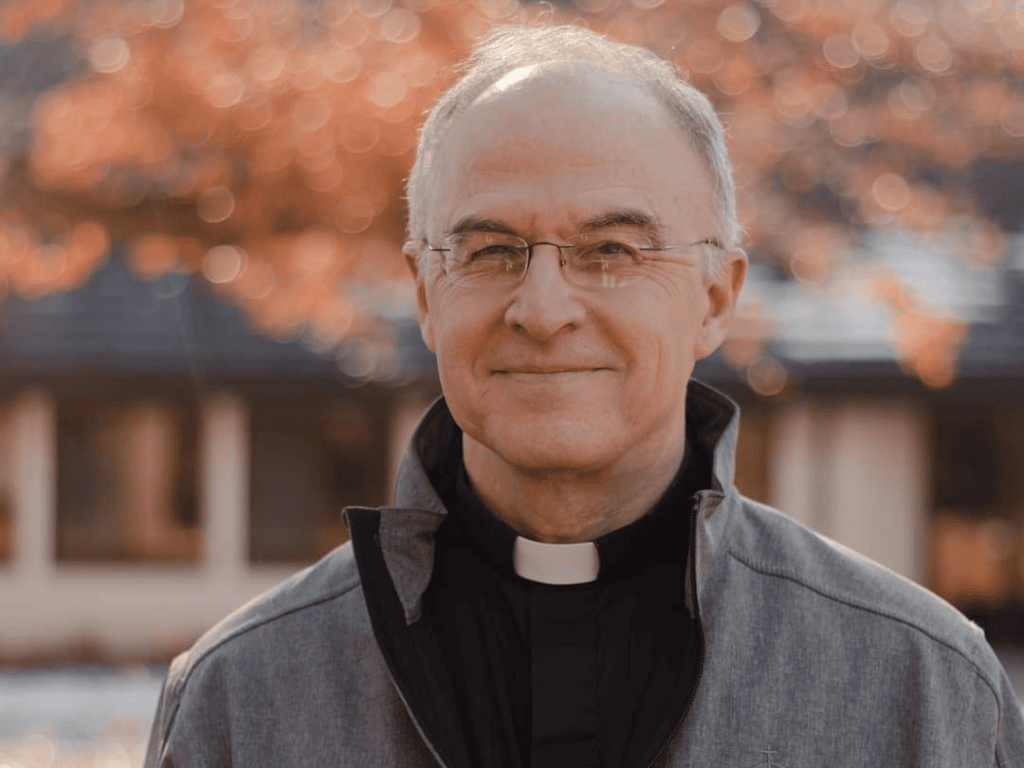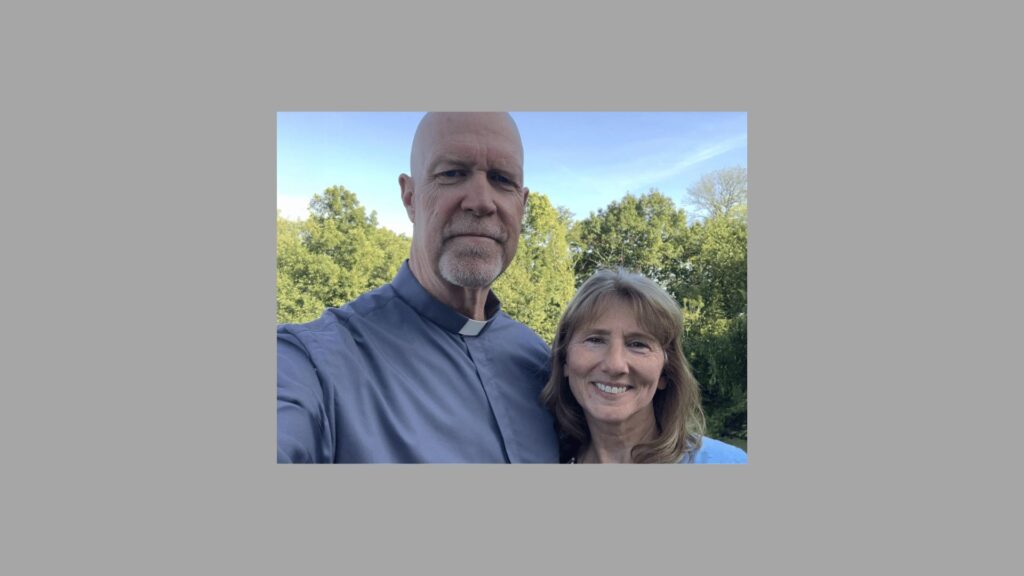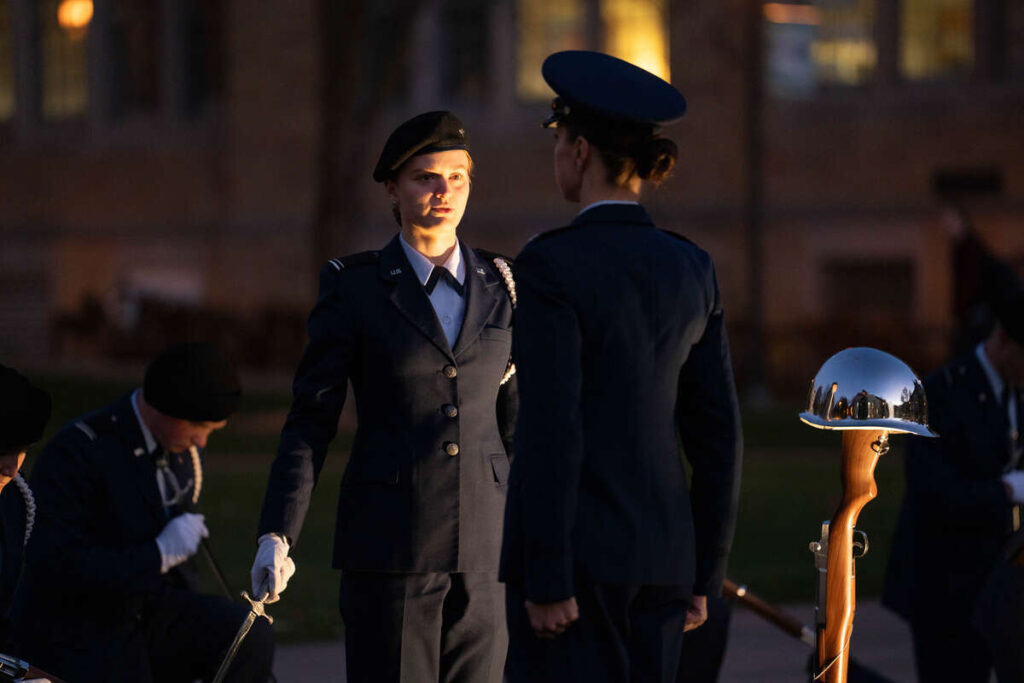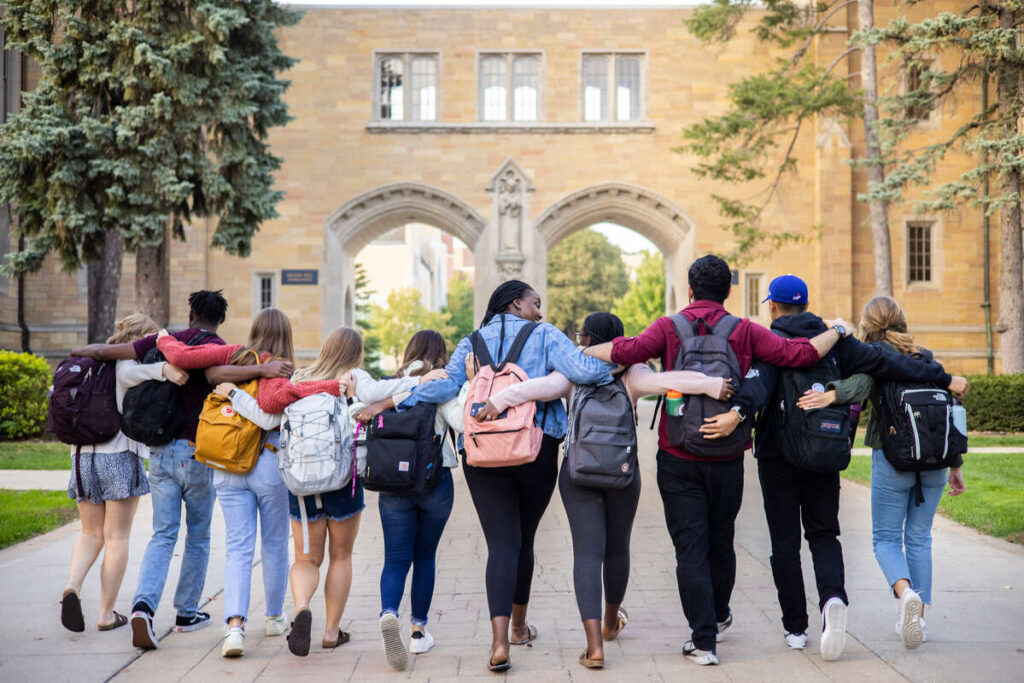How do you honor a deceased student’s life while creating a space that can hold the weight of grief and remembrance? That is a question that has been circulating across campus for the past several years; it’s one that doesn’t have a correct answer but deserves a heartfelt attempt at a response.
In 2017, the Undergraduate Student Government (USG) came up with an idea that would change the St. Thomas landscape. USG members discovered, after losing several peers and friends, that St. Thomas lacked a grieving space, a place that would allow students, faculty, friends and families to commemorate lost loved ones as a community. The idea for the Memorial for Deceased Students dawned.
After months of preparation, the memorial is now installed at the St. Paul campus. It stands near the Chapel of St. Thomas Aquinas. While it was expected to be done sooner, delays in shipping contributed to the later implementation date. A dedication ceremony will be held Oct. 9.
Crews installed the tall granite panels in November 2021. With the insertion of the orange glass discs almost a year later on Sept. 7, the Memorial for Deceased Students is now fully complete.
Reflecting the lives of students who passed while in attendance at St. Thomas, the memorial stands for not only the significance of their livelihood, but also for St. Thomas’ gratitude for being a part of each deceased student's story.

The memorial is also an opportunity to honor families. Lange noted that college is a time for exploration and a time of excitement, and to have a fellow student die is terribly hard for families, fellow students and the community.
USG worked on this idea for years, eventually bringing it to fruition with help by the Division of Student Affairs. The university then created a Deceased Student Memorial Committee in which faculty, USG members, a spouse of a deceased St. Thomas student and other notable figures were members.
“I have been blown away by the committee’s commitment to this project,” said Victoria Young, professor of art history at St. Thomas.
Young volunteered to serve on the memorial’s committee after hearing about the idea while working on the Iversen Center for Faith (ICF).
“I was on the design committee for the ICF and as the landscaping plans were developing, this spot showed up that was perfect for the memorial,” she said.
The committee united to discuss the logistics of the memorial together; working with the artist, confirming the location and deciding how the memorial would best serve the St. Thomas community.
James Dinh, an accomplished landscape architect from Southern California, was chosen to design the memorial in conjunction with the committee and the St. Thomas community, which had the opportunity to vote for their favorite artist’s design and rendering. Dinh recognized that this memorial carried a lot of weight and he put a lot of pressure on himself to execute its significance properly. The project’s overall meaning was a new endeavor for Dinh, as well.
“This was a first for me,” he said. “I’ve worked on memorials for law enforcement and veterans memorials. This was completely different as it was open-ended. It was more about conveying how to honor life.”
Dinh studied the project down to its core, picking out everything from the type of stone to colors and textures that the memorial would have. He even visited campus to make sure he understood the campus landscape, taking inspiration from the stone-built buildings and light-wash brick. Dinh will be back on campus this fall for the Oct. 9 memorial dedication ceremony.
“Stone is a very enduring material. Fortunately, I found a company called Coldspring out of St. Cloud, so the memorial is made up of quarry stone from Minnesota.”
In addition to the composition of the memorial, Dinh’s proposal suggested the memorial have a color-based center.
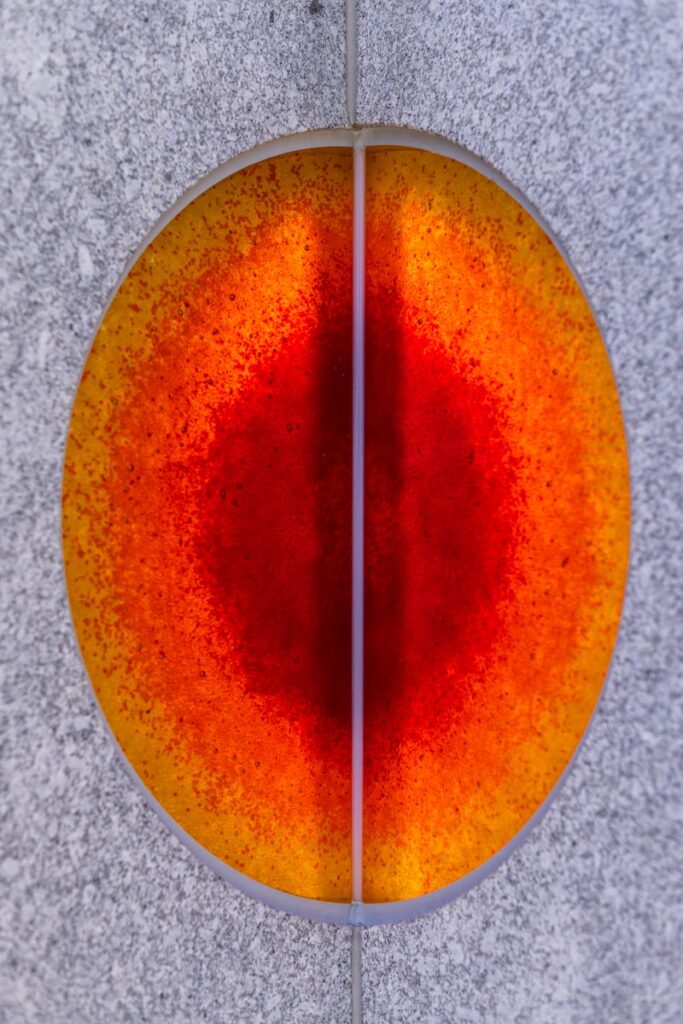
“It's durable and powerful. The inset of red glass has warmth to it,” explained Young.
While the center to the glass is red, it softly fades out to beautiful tones of orange and yellow. Dinh explained that, to him, the glass was representative of the heart.
“This idea was that as light shines through the glass, it will have this sun feel to it,” he said.
The overall circular form of the memorial was inspired by the Chapel of St. Thomas Aquinas, specifically the chapel’s four round stained-glass windows. The memorial will be absent of names and writing, as the committee decided against this addition when exploring the logistics of the piece.
“I wanted the design to be very inclusive and welcoming to all people. People will interact with it as a work of art. I didn’t want to dictate how people should feel when they see the memorial. I wanted this to be an honor and celebration of life,” said Dinh.
The lack of verbiage and mindful construction of the memorial allows the piece to be open to interpretation by the viewer. It will be engaging on both the physical and visual level. Those visiting the memorial will notice that the structure is tactile. The edge of the stone has a layer of roughness, while the face of the stone is smooth.
“It’s made of all these subtle things that I thought about. I felt the committee really appreciated these nuances and they really picked up on it,” he said.
